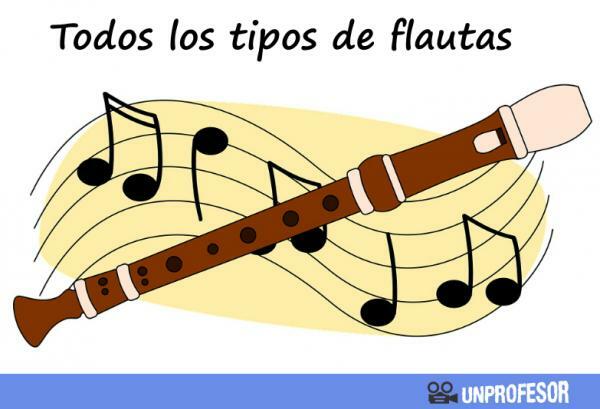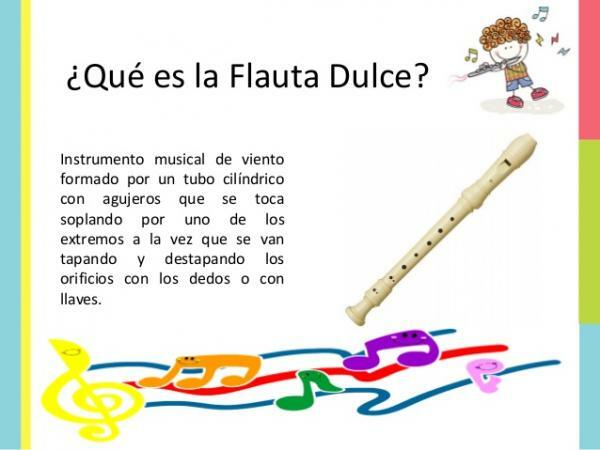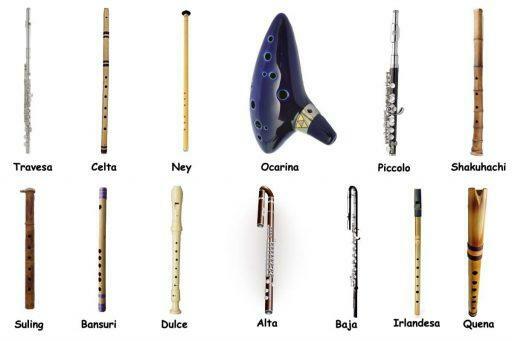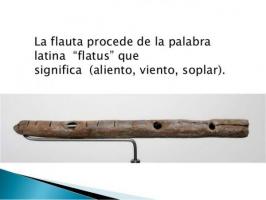Discover the TYPES of FLUTES of music

Music is as old as curiosity and the need to create. This same creativity has led the human being to invent tools to play with sound, artifacts which we call musical instruments. Since some ideas and discoveries have worked with excellence, it is common for several instruments to use the same principle. Even so, the desire to vary or get closer to a more specific idea are motivations for the same instrument to evolve or change course to obtain a different result.
The flute for example is one of the oldest instruments in the history of music, thanks to so many years of existence it has obtained many forms and variants. In this lesson from a TEACHER we will talk about types of flutes.
The fluteis a cylindrical musical instrument that belongs to the category of woodwind instruments or aerophones. The sound is produced by means of the air that is introduced when blowing through one end of the instrument, the air travels through the body and its course is altered by holes that are covered and uncovered
to create different notes. Generally the flute is played with two hands, combining positions with the fingers to cover the holes. Sound can also be altered by the way the musician blows, creating effects and textures.Unlike other instruments in the woodwind category such as the oboe and clarinet, the flute does not require reed or reed, which is a small additional piece that is attached to the mouthpiece of the instrument. The flutes, on the other hand, obtain the vibration of the air with their own body, often with bezel, which is a sharp edge that cuts through the air, producing sound.

Image: Slideshare
There are a huge number of flute versions, however the ones we get to know are those with designs that have become popular or have reached such excellence that it has made them classic or irreplaceable. Of the common flutes in the field of classical music we find the following:
- Recorder: Popular for being used for educational purposes thanks to its low cost. It is made of plastic. He is played vertically with 2 hands and the fingers plug the holes directly.
- Transverse flute: It is made of metal and is played horizontally. Unlike the recorder, the holes are covered and uncovered by means of "keys", thanks to a mechanism. This flute is the one most commonly used in symphony orchestras.
- Piccolo or piccolo: It has a timbre similar to that of the transverse flute but its tessitura is sharper and it is smaller in size. Its body is made of wood (usually black) and has metal parts. It also has mechanisms with keys for the holes.

Image: The Tremending Topic
From west to east and even crossing the ocean we find different flutes. We list some of them with their place of origin:
- Irish Whislte or Penny Whistle (Ireland)
- Ney (Egypt / Middle East)
- Ocarina (Central America)
- Shakuhachi (Japan)
- Suling (Indonesia)
- Bansuri (India / Pakistan)
Another type of flute that we can mention is Pan flute, that it is not actually a single-body flute, but several individual note cylinders that are placed together. The ancient origin is Greek, but there are popular versions in Latin American folklore, such as the Panpipe.
To categorize the types of flute we have to be clear that even within the same type of flute we find different versions of it, which can vary in terms of record or tuning.
- The record refers to the notes that an instrument is capable of producing, from the lowest to the highest. Sometimes within the same instrument family there are several versions to cover very different registers and each of these versions has its own name, which originally come from the voice records human. These are called "soprano, alto, tenor, bass"... among others. This is the case of the recorder for example, of which we have up to 10 versions of different records.
- On the other hand, the tuning is when the basic note of the instrument is shifted in terms of sound frequency, to make it a little higher or lower. In this case, the register changes very slightly and its way of reading on the staff is altered according to the pitch.
The flute is a melodious and very agile instrument, for many, the instrument closest to the human voice. Thanks to the variety of flutes there is a wide spectrum of timbres to discover and with which you can experiment to create music. It is curious that there are so many versions of an instrument based on a single principle.
Knowing all the types of flute that exist, it may attract your attention to approach one to see it more closely and perhaps learn to play it.

Image: Educating



